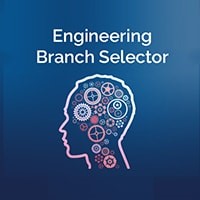Have you ever pondered the salary of a rocket scientist? Knowing NASA scientist salary is a critical first step if you’re interested in a career exploring space with NASA. This information can assist you in determining whether following this interesting career is financially feasible. While the excitement of making new discoveries and contributing to ground-breaking missions cannot be disputed, pay is certainly an important consideration when choose your professional path. Let’s take a closer look at typical NASA Scientist Salary, as well as factors that may affect them and what to anticipate at different points in your career as a scientist.
- Overview of NASA’s Role in Space Exploration
- Importance of Scientists in NASA’s Mission
- Types of Scientist Employed by NASA
- Factors Affecting NASA Scientist Salary
- Typical Range for NASA Scientist Salary
- Benefits and Perks Offered to NASA Scientist Salary
- Comparison of NASA Scientist Salary with Other Agencies or Industries
- Global Comparisons: NASA vs Other Space Agencies
- Challenges and Rewards of Working at NASA
- Life After NASA: Post-Employment Opportunities
- Challenges and Opportunities in Pursuing a Career as a NASA Scientist Salary
- Perks and Benefits Beyond Salary
- Performance-Based Bonuses and Incentives
- Job Growth and Promotion Opportunities
- Conclusion
- FAQ’s (Frequently Asked Questions)
Overview of NASA's Role in Space Exploration
Prior to delving into NASA scientist salary, allow us to briefly introduce the amazing organisation that you may be considering pursuing a career with! The cornerstone of American space exploration is NASA, the National Aeronautics and Space Administration. It was founded in 1958 and is essential to:
- NASA leads missions to study planets, stars, galaxies, and other celestial bodies in an effort to unravel the mysteries of the universe. Their robotic explorers and observatories have transformed our knowledge of the universe, including everything from the makeup of far-off stars to the possibility of extraterrestrial life.
- Pushing the Boundaries of Technology: NASA is a centre for technological innovation, continuously creating new tools for space travel. This includes instruments that push the envelope of what is feasible as well as rockets, spacecraft, and satellites.
- Motivating the Upcoming Generation: NASA is essential in arousing curiosity in science and cultivating an enthusiasm for exploration. Young people are encouraged to pursue jobs in science, technology, engineering, and mathematics (STEM) disciplines via their educational programmes and public outreach campaigns.
- Advantages for Everyone Space exploration is not the only reward of NASA’s accomplishments. From weather forecasting to medical imaging, the technologies and information acquired frequently have useful applications that enhance our quality of life on Earth.
You will have a greater appreciation for the possible significance of a career as a NASA scientist if you are aware of the agency’s mission and impact. Let’s change course now and investigate the realm of NASA scientist Salary !
Importance of Scientists in NASA's Mission
- Scientists are integral to the design and planning of each mission, helping to shape its objectives and vision. They specify the scientific problems that a mission seeks to resolve, plan the experiments that will be carried out, and choose the equipment that will be required to collect data.
- Technological Innovation: NASA Scientist Salary are frequently the source of new technologies for space exploration. They collaborate with engineers to create cutting-edge tools, experiments, and spaceships that can survive the hostile environment of space and yield important scientific data.
- Data Interpretation and Analysis: Following the launch of a mission, scientists must examine the copious amounts of data that satellites and telescopes have gathered. Their knowledge enables them to reveal the mysteries concealed in this information, producing ground-breaking discoveries about the cosmos.
- Adaptability and Problem-Solving: Space exploration is a difficult undertaking by nature. Technical issues and unforeseen circumstances can occur. Scientists surmount these obstacles and guarantee the mission’s accomplishment by applying their critical thinking and problem-solving abilities.
- Collaboration and Communication: Teamwork is essential for scientific advancement. NASA scientists collaborate with colleagues from different fields, sharing information and skills within diverse teams. They are also essential in educating the public about difficult scientific findings and promoting global cooperation in space exploration.
Types of Scientists Employed by NASA
| Field of Expertise | Description | Example Roles |
|---|---|---|
Astrophysics |
Study of the universe’s large-scale structure, origin, evolution, and composition | Astrophysicist, Cosmologist, Solar Physicist |
Planetary Science |
Study of planets, moons, asteroids, comets, and other objects within our solar system | Planetary Geologist, Atmospheric Scientist, Exoplanet Researcher |
Earth Science |
Study of Earth’s physical characteristics, processes, and history | Geologist, Climatologist, Remote Sensing Scientist |
Biological and Physical Sciences |
Apply principles of biology, chemistry, and physics to space exploration | Astrobiologist, Aerospace Engineer, Space Chemist |
Note: This table offers a broad summary. Scientists with a greater variety of specialisations within each subject are employed by NASA.
Factors Affecting NASA Scientist Salary
| Factor | Description | Impact on Salary |
|---|---|---|
Education Level |
A Ph.D. in a relevant scientific field is typically required for most NASA scientist positions. Postdoctoral experience can further enhance your qualifications and earning potential. | Higher education and experience generally lead to higher salaries. |
Job Title and Responsibilities |
Different scientist positions within NASA carry varying levels of responsibility and complexity. Senior scientists leading major projects will typically command higher salaries compared to entry-level researchers. | More specialized roles and greater leadership responsibilities often translate into higher salaries. |
Location |
NASA facilities are spread across the United States. Cost of living variations between locations can influence salary ranges. Generally, positions in areas with a higher cost of living may offer higher salaries to compensate. | Salaries may be adjusted based on the cost of living in the duty location. |
Experience |
The more experience you have in your scientific field, the more valuable you become to NASA. A proven track record of research, publications, and contributions to the field can significantly increase your earning potential. | Extensive experience and a strong track record can lead to significant salary increases. |
Performance |
Exceptional job performance, exceeding expectations, and making significant contributions to NASA’s missions can lead to promotions, bonuses, and higher salaries. | Outstanding performance can be rewarded through salary increases and bonuses. |
Security Clearance |
Some NASA positions require a security clearance, which can involve additional training and responsibilities. These positions may come with higher salary ranges to reflect the added security measures. | Jobs requiring a security clearance may offer a salary premium. |
Other things to think about
- Specialisation: You may be able to get paid more if you have a scientific specialty that NASA is in great demand for.
- As opposed to Contractors: Depending on whether you work directly for NASA Scientist Salary or for a contractor that supports NASA operations, your salary may differ slightly.
- Benefits: NASA provides a wide range of benefits, such as retirement programmes, health insurance, and other advantages. You should take these advantages’ worth into account when determining your total remuneration.
Typical Ranges for NASA Scientist Salary
| Career Stage | Job Title | Salary Range (In $) |
|---|---|---|
| Entry-Level (0-4 years experience) | Geologist, Aerospace Engineer, Planetary Researcher | 70,000 – 90,000 |
| Mid-Level (5-10 years experience) | Astrophysicist, Research Scientist, Project Scientist | 90,000 – 120,000 |
| Senior Level (10+ years experience) | Principal Investigator, Team Lead Scientist, Program Manager | 120,000 – 150,000+ |
Important Note: The salary estimates in the previous table are based on estimates from a variety of sources and may differ based on location, experience, education, and other factors. It is always advisable to look into certain pay ranges for desired positions and job titles. Salary information may be displayed annually or on a monthly basis NASA Scientist Salary. When comparing information from several sources, be sure you’re comparing apples to apples. The overall compensation may be affected if signing bonuses or performance-based incentives are given in addition to the base pay. Benefit packages can differ as well, so keep that in mind when evaluating your total pay.
Benefits and Perks Offered to NASA Scientist Salary
| Category | Description |
|---|---|
Health Insurance | NASA employees receive comprehensive health insurance plans covering medical, dental, and vision care. The specific plans and coverage details may vary depending on your location and enrollment choices. |
Life Insurance and Retirement Savings | The Federal Employees Retirement System (FERS) provides a combination of defined-benefit and voluntary defined-contribution retirement savings options. Life insurance is also available through various programs. |
Paid Time Off | NASA scientists typically accrue paid vacation, sick leave, and personal leave days each year. This allows for time for relaxation, travel, and personal needs. |
Holidays | All federal employees, including NASA scientists, receive paid federal holidays throughout the year. |
Flexible Spending Accounts (FSAs) | These accounts allow you to set aside pre-tax dollars to cover qualified medical and dependent care expenses, reducing your taxable income. |
Tuition Reimbursement | Many NASA centers offer programs that reimburse employees for tuition expenses incurred while pursuing job-related educational opportunities. |
Employee Assistance Programs (EAPs) | Confidential counseling and support services are available to assist employees with personal or work-related challenges. |
Wellness Programs | Many NASA centers offer wellness programs that encourage healthy lifestyles through fitness center access, health screenings, and wellness challenges. |
Professional Development Opportunities | NASA invests in its workforce by offering training programs, conferences, and other opportunities to enhance your skills and knowledge. |
Work-Life Balance | Strives to foster a healthy work-life balance by offering flexible work arrangements, on-site childcare options (availability may vary by location), and other programs to support employee well-being. |
Location Perks | Depending on your duty station, you may enjoy unique perks like working near iconic landmarks (e.g., Kennedy Space Center) or having access to breathtaking natural environments. |
The Opportunity to Make a Difference | Working at NASA allows you to contribute to groundbreaking scientific discoveries and be part of a team pushing the boundaries of human exploration. This intrinsic reward can be highly motivating for many scientists. |
Extra Information
- Depending on your job title, duty location, and employment type (contractor vs. government servant), the specifics of your benefits package may change.
- For the most recent and correct information, it is always advised to speak with the appropriate HR department or benefits office at your NASA Scientist Salary.
Comparison of NASA Scientist Salary with Other Agencies or Industries
| Field/Industry | Job Title | Average Salary Range (In $) |
|---|---|---|
NASA | Entry-Level Scientist (0-4 yrs exp) | 70,000 – $90,000 |
| Mid-Level Scientist (5-10 yrs exp) | 90,000 – $120,000 | |
| Senior Scientist (10+ yrs exp) | 120,000 – 150,000+ | |
National Oceanic and Atmospheric Administration (NOAA) | Oceanographer, Meteorologist | 75,000 – 110,000 |
| National Institutes of Health (NIH) | Biomedical Scientist, Research Chemist | 80,000 – 130,000+ |
Department of Energy National Labs | Materials Scientist, Physicist | 85,000 – 125,000 |
Aerospace Industry | Aerospace Engineer, Propulsion Engineer | 80,000 – 140,000+ |
Defense Industry | Systems Engineer, Weapons Systems Engineer | 90,000 – 135,000+ |
Global Comparisons: NASA vs Other Space Agencies
Salary and Career Opportunities at ESA, Roscosmos, and ISRO
NASA scientists commonly earn better salaries than their opposite numbers on the European Space Agency (ESA), Roscosmos, and the Indian Space Research Organisation (ISRO). While ESA scientists have salaries akin to NASA in Europe, Roscosmos and ISRO salaries are fantastically decrease because of local monetary factors. However, profession possibilities in those companies provide special incentives. ESA focuses closely on European collaborations, even as ISRO is thought for cost-powerful area missions, and Roscosmos emphasizes human spaceflight. NASA gives a broader variety of studies possibilities, with a extra various choice of tasks throughout planetary science, astrophysics, and human area exploration.
Key Differences in Compensation and Job Roles
The number one distinction in repayment throughout those companies stems from the various monetary scales of the areas they function in. NASA gives extra good sized salaries, benefits, and studies funding. Job roles additionally differ: NASA emphasizes interdisciplinary studies and global collaborations, even as ESA and Roscosmos awareness on local priorities. ISRO, acknowledged for its resourcefulness, gives profitable paintings on high-effect tasks with extra cost-powerful missions, aleven though repayment is decrease as compared to NASA.
Challenges and Rewards of Working at NASA
Intellectual and Research Challenges
Working at NASA includes addressing a number of the maximum complicated and superior medical questions. Scientists address demanding situations together with exploring remote planets, expertise the universe`s origins, and growing generation for human area exploration. These duties require rigorous studies, creativity, and innovation. NASA scientists regularly paintings on modern projects, wherein failure is common, however important for getting to know and success. Constantly pushing the limits of human understanding gives a worrying but stimulating surroundings that draws the world’s brightest minds.
The Impact of NASA Work on Global Space Science
NASA’s studies and missions extensively effect worldwide area science. Breakthroughs from NASA, together with the Hubble Space Telescope discoveries or Mars rover missions, set worldwide benchmarks for medical exploration. NASA`s paintings now no longer handiest advances medical understanding however additionally conjures up different area companies and the wider public. The technology evolved regularly have packages past area, contributing to fields like medicine, engineering, and environmental science. NASA scientists` paintings extends past their on the spot projects, affecting global area exploration efforts and worldwide medical advancement.
Life After NASA: Post-Employment Opportunities
Transitioning to Academia or Industry
After running at NASA, many scientists transition to academia or industry. In academia, they could hold studies, teach, and mentor the subsequent era of area scientists. Their revel in at NASA regularly enables them stable positions at prestigious institutions, wherein they could leverage their NASA community and information. In the non-public sector, former NASA scientists are surprisingly popular via way of means of aerospace organizations like SpaceX, Boeing, and Blue Origin. Their know-how in current area generation makes them precious belongings in advancing industrial area exploration.
Consultancy and Advisory Roles in Space-Related Fields
Ex-NASA scientists regularly locate roles as experts or advisors with inside the area and protection industries. Their specialized information of area missions, systems, and studies methodologies makes them perfect for advising non-public organizations, governments, or even worldwide area organizations. These roles can contain strategic decision-making for brand new area initiatives or generation development. They can also paintings with startups withinside the burgeoning area industry, imparting insights into navigation, satellite tv for pc systems, and spacecraft design, making their post-NASA careers each impactful and lucrative.
Challenges and Opportunities in Pursuing a Career as a NASA Scientist Salary
Obstacles
- Competitive Environment: It’s quite difficult to get a job at NASA. Top scientists from all around the world are drawn to the organisation, which has strict requirements including a solid academic record, relevant research experience, and a love of space exploration.
- Strict Education: For the majority of NASA Scientist Salary posts, a Ph.D. in a related scientific discipline is usually required. Many years of devoted study and investigation are required to follow this path.
- financing and Grants: For scientists just starting out in their careers, obtaining financing for research initiatives can be particularly difficult. Your ability to draft strong grant proposals and compete for scarce resources is often the key to success.
- Long Hours and Demanding Schedules: Working on space missions can require long hours, especially when resolving technical problems or during crucial launch windows. It might be difficult to maintain a good work-life balance at times.
Prospects
- Be at the Front of Discovery: Join a team that is pushing the limits of human exploration and contribute to ground-breaking scientific research by working at NASA Scientist Salary.
- Work on State-of-the-Art Technology: One of the main goals of NASA’s work is the development and application of cutting-edge technologies for space exploration. You will get the chance to work on creative ideas alongside engineers.
- Impact on the World: NASA’s discoveries excite new generations and have a significant influence on our comprehension of the cosmos. Your study has the potential to advance science and have an international impact.
Perks and Benefits Beyond Salary
Health and Retirement Benefits
NASA affords a complete fitness blessings package, consisting of medical, dental, and imaginative and prescient insurance, that is a extensive gain for area scientists. Employees can select from numerous Federal Employees Health Benefits (FEHB) plans, supplying flexibility to pick out insurance that fine fits their needs. NASA scientists additionally have get admission to to existence coverage and long-time period care coverage thru the Federal Employees` Group Life Insurance (FEGLI) and Federal Long-Term Care Insurance Program (FLTCIP). In phrases of retirement, NASA personnel enjoy the Federal Employees Retirement System (FERS), which mixes Social Security, a pension plan, and the Thrift Savings Plan (TSP), much like a 401(k), with authorities matching contributions. This guarantees a stable post-profession monetary future.
Travel and Research Grants
NASA scientists regularly have possibilities to journey for studies projects, global conferences, and collaboration with different area agencies. The organization covers journey prices for studies-associated activities, permitting scientists to take part in groundbreaking research globally. Additionally, NASA affords studies offers for revolutionary projects, permitting area scientists to get admission to modern era and sources to pursue their medical goals. These offers are aggressive and are offered to researchers with amazing proposals, regularly main to improved popularity and expert advancement.
Work-Life Balance and Job Security
Work-existence stability is a concern at NASA, in which bendy running hours and telecommuting alternatives are common. Employees gain from beneficiant excursion time, consisting of annual go away and ill go away, assisting to stability expert and private commitments. NASA additionally affords strong parental go away policies. In phrases of task security, as a federal organization, NASA gives substantial balance, with personnel covered from marketplace fluctuations. Once hired, scientists revel in long-time period employment prospects, supplied they meet overall performance standards, making NASA an appealing profession alternative for the ones looking for each balance and success of their work.
Performance-Based Bonuses and Incentives
Awards and Bonuses for Exceptional Research
NASA acknowledges and rewards tremendous studies and innovation via diverse overall performance-primarily based totally bonuses and awards. Scientists who make a contribution groundbreaking studies or technological advances can be eligible for financial awards and popularity inside the agency. NASA`s overall performance appraisal device takes under consideration an employee`s medical contributions, collaboration on key missions, and posted work. Annual overall performance critiques frequently bring about economic bonuses for pinnacle performers, encouraging excellence in studies and medical discovery.
Additional Earnings for Special Projects and Missions
NASA additionally presents extra economic incentives for scientists worried in high-precedence or time-touchy missions. Scientists running on essential initiatives, inclusive of area exploration missions or the improvement of latest area technologies, can also additionally get hold of more repayment for his or her function in those important efforts. This consists of additional time pay or project-precise bonuses for people who make a contribution notably to the fulfillment of NASA`s high-profile missions. Scientists who lead or participate in unique studies initiatives might also advantage from furnish funding, taking into consideration better profits whilst advancing current medical initiatives.
Job Growth and Promotion Opportunities
Career Progression at NASA (Research Scientist, Lead Scientist, Project Director)
NASA gives a clean course for profession development, permitting area scientists to transport via diverse ranks primarily based totally on revel in, studies contributions, and management. Entry-stage scientists usually begin as Research Scientists, in which they cognizance on particular regions of area science, including astrophysics or planetary science. With steady overall performance and first-rate studies contributions, they may be promoted to Lead Scientist roles, in which they oversee tasks and mentor junior researchers. As they benefit revel in and construct a recognition inside NASA, they’ll development to Project Director or Program Manager roles, main widespread NASA missions and directing big groups of researchers and engineers.
Salary Growth with Promotions
Promotions at NASA are tied to the federal General Schedule (GS) or Senior Executive Service (SES) pay scales, relying on the extent of the role. As area scientists circulate up the ranks, they advantage from big profits increases. For example, transitioning from a GS-12 Research Scientist to a GS-14 Lead Scientist can bring about a profits growth of 15-20%, with better ranges like GS-15 or SES positions commanding even greater widespread raises. Along with better salaries, promotions include expanded responsibilities, which include management of most important tasks and involvement in high-stakes selections associated with area exploration and studies. This profession development guarantees that scientists now no longer handiest develop professionally however also are financially rewarded for his or her contributions and expertise.
Conclusion
The interesting world of NASA Scientist Salary and career trajectories has been illuminated by this investigation. The following are some important lessons learned:
- Salary Ranges: Depending on experience, education, and job title, NASA Scientist Salary can expect to earn competitive salaries within the government scientific sector. Senior scientists with substantial expertise can make well over $150,000 annually, while entry-level scientists can expect to make between $70,000 and $90,000.
- Factors Influencing Wage: NASA scientists’ pay are influenced by a number of elements, such as their level of education, job title, location, experience, performance, and need for security clearance.
- Benefits and Perks: In addition to a base pay, NASA Scientist Salary provides a full range of benefits, such as paid time off, health insurance, retirement savings plans, and a number of initiatives supporting professional growth and work-life balance.
Obstacles and Benefits:
Becoming a NASA scientist is a difficult career path that calls for a solid academic foundation, research experience, and steadfast dedication. But the benefits are enormous. You’ll cooperate with bright minds, work on state-of-the-art projects, and make a significant global scientific contribution.
The Last Frontier Is Calling
In the end, a career at NASA offers the chance to advance human knowledge, solve cosmic mysteries, and be a part of something greater than just a job. If it seems like something you want to do, then the difficulties become stepping stones on a path full of exploration, teamwork, and the great satisfaction of helping shape space exploration in the future.
FAQ's (Frequently Asked Questions)
Q1. How to become NASA Scientist?
Ans. Applicants must have a master’s degree in STEM courses, 2 years of professional experience in related fields, and the ability to pass NASA long-duration flight astronauts physical. Additional skills like Leadership, teamwork, and communication are a bonus.
Q2. Can a Indian join NASA?
Ans. Other than extremely rare exceptions, you must be a U.S. citizen in order to work for NASA as a civil service employee. If you are not a U.S. citizen, you may wish to consider opportunities with one of our International Space Partners: Agencia Espacial Brasileira (AEB) Italian Space Agency.
Ans.
ISRO Scientist Salary
The ISRO Scientist Salary per month is around INR 70,000. What is the ISRO engineer’s salary in hand? The in hand ISRO Engineer salary ranges from INR 15,600 to INR 80,000 depending on their level, experience, and other aspects.
Q4. What is the highest salary in ISRO?
Ans. The salary of ISRO scientists ranges anywhere between INR 15600 – 39100/- per month as the basic pay. However, after some years, the pay grade can reach INR 75,500 – 80,000. Besides, working in ISRO has different perks that one can enjoy as an employee.
Ans.
CEOs are the heads of corporations whereas NASA is a department of government. As such there is no CEO position in NASA. How do you become the head of NASA – have political connections and a science/engineering education and maybe a science/engineering career. NASA Scientist Salary is the National Aeronautics and Space Administration.
Ans. Possess a master’s degree* in a STEM field, including engineering, biological science, physical science, computer science or mathematics, from an accredited institution. Have at least two years of related professional experience in a STEM field or at least 1,000 hours pilot-in-command time on jet aircraft.



















